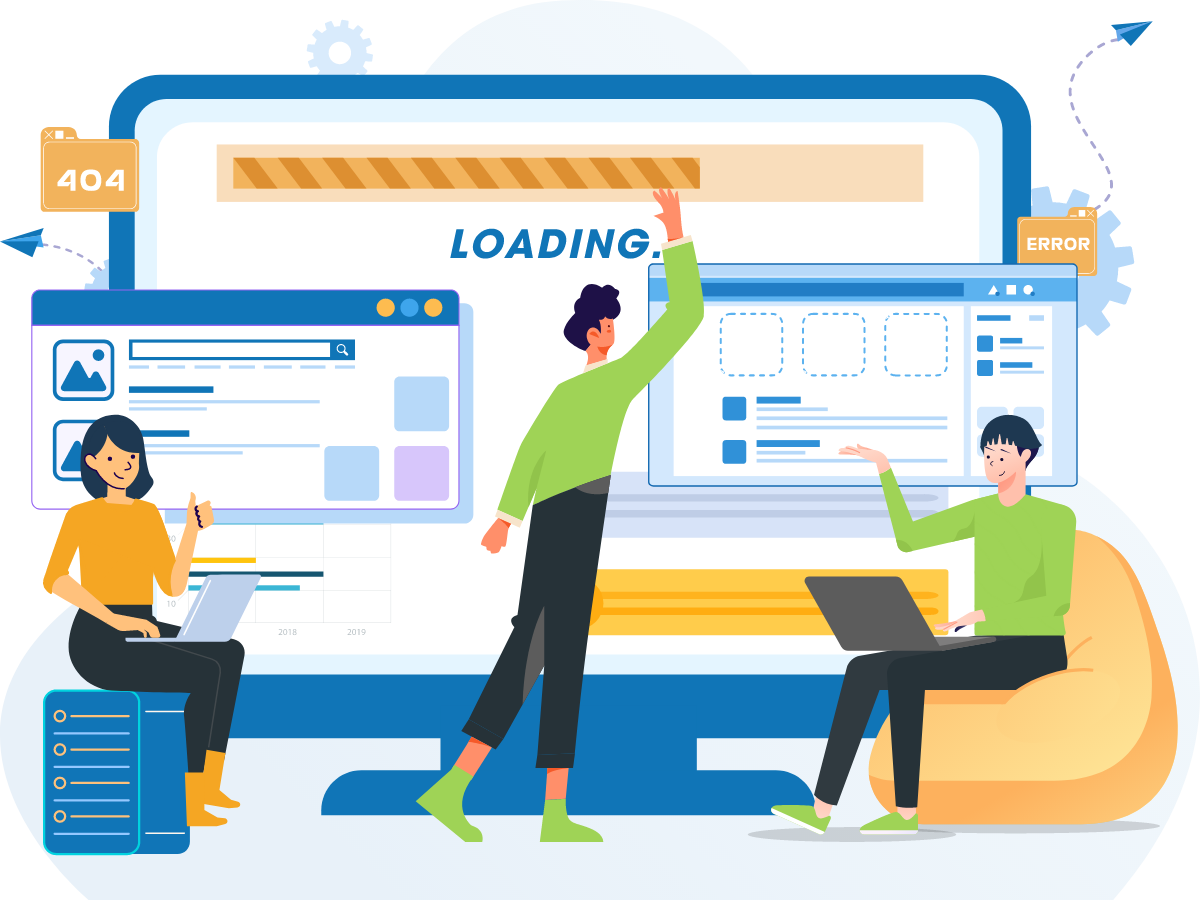
Rated ⭐ ⭐ ⭐ ⭐ ⭐ 4.9

The demand for website development increases day by day. The website represents your business and brand in the digital space. Your website should be user-friendly and engaging for your audience. The business website should attract visitors to stay longer and increase retention rates.
If you have noticed that the number of visitors visiting your website has reduced or the website traffic is not up to your expectation, it means that there might be something wrong with your website that needs serious attention.
Building a successful website is a crucial task, as it defines the success of your business. The website helps you to communicate the varied aspects of your business, products, or service. Similarly, the users visit the website to know about your business and its mobile and social media engagement. So, website design and development is an eminent task.
After reviewing the client's feedback and the market demands, here are the following tips that can save your website from major damage.
The evolution of websites has come a long way. Over the years, the approach to designing and developing a website has become more consumer-oriented. The UX/UI are the first thing a user encounters when they visit a website. Users should easily navigate through websites without any hesitation or confusion.
Website navigation is a vital element that some developers neglect while building a website. An intuitive navigation transports the users towards the right flow and gives them a flawless experience. Make the website more functional, specifically if you wish them to do a particular task. Map the pathway properly so that your consumers will have a pleasant website experience.
Have a responsive website that adjusts according to the screen size. Keep your website mobile-friendly, as it is the most popular platform. An optimized mobile-friendly website attracts a larger user-base. And make sure to meet the expectations of your consumers.

Sometimes developers and designers become busy in building interactive websites and fail to build their security. Security should be considered at every stage of website development especially while dealing with crucial information like confidential information, payment and contact details. There are a lot of malicious software, cyber attacks, and malware that exist over the internet that might cause trouble to your website. Furthermore, it is important to protect the website from serious threats like Phishing, Session hijacking, shell injection attacks, cross-site scripting, Buffer overflow, cross-site request forgery, SQL injection, etc.
Also, you have to consider many things related to security like, unauthorized access to restricted resources of the website, user data safety, denial of service attack, and data malfunction.
If you are not aware of the security status of your website, you can communicate with your hosting provider to help you with. As most of the hosting providers will have a fresh and updated platform. You can also check if the website elements are up-to-date.

The key aspect for a successful website is its performance and slower loading time refers to the downfall of the website. If the performance is not upto the expectation, the consumers might not revisit your website and it gradually affects the reputation and revenue. There are a few common reasons for performance issues like poor load distribution, improper coding, unmanaged growth of data, default configuration, unoptimized database, traffic spikes, problematic third party service, etc.
You can use a network of servers for your website by CDN, CDN is known as Content Distribution Network, it is a global distribution hub of proxy servers that are situated in multiple data centers. Therefore, the request on a server is routed to another server to balance the traffic and the data files are distributed in multiple CDNs. Hence, there will be no delay in downloading or queuing of text, video, image files.

Another prime element in website development is scalability. Scalability doesn't mean using effective bandwidth and power, or performance. It is about balancing between the servers. When traffic increases on the website, using additional servers to balance the load is the real meaning of scalability.
You should not dump overload on a single server, but design the website in such a way that it works with a cluster of servers. To improve the scalability of your website adapt the SOA design. SOA is called Service-oriented architecture, where the applications component offers other components service via communication protocol over the network. SOA gives your website the flexibility to easily change from one server to another based on the need.

Frameworks are the foremost element for the website language. Framework provides libraries of coding, boost the performance, and improve the capabilities of developing the language so that you need not spend hours in coding. Frameworks provide attributes like APIs, models, code snippets, and other elements to build your website. Some frameworks are flexible, while others are rigid. The web platforms offer client libraries to build on existing frameworks that are required to build your website. You can easily add new functionality to your website by using an external API.
While building the website on your own or via a professional, you should have a clear idea on the purpose and importance of the business to build an efficient website. You need an impressive platform to build your website. There are many website builder tools available in the market, choose the one that suits your needs. You should consider the customization options, pricing, analytics, learning curve, technical skills.

Additional tips to keep your website popular. There are a few more mistakes that you can correct to build a potential website.
We have discussed the most commonly made mistakes that take place while developing a website. If your website has any of these mistakes, try to rectify them as soon as possible to retain a potential customer.
CONTACT US
Partner with Autuskey to build a remote, Agile software development team. Partner with Autuskey to build a remote, Agile software development team.

Rated ⭐ ⭐ ⭐ ⭐ ⭐ 4.9